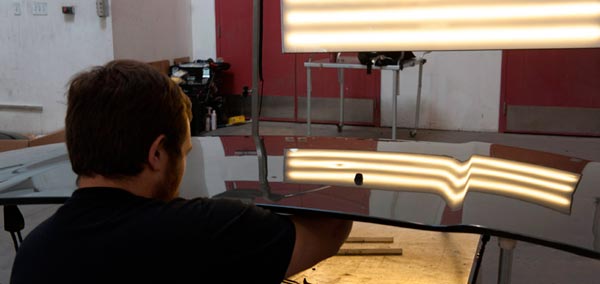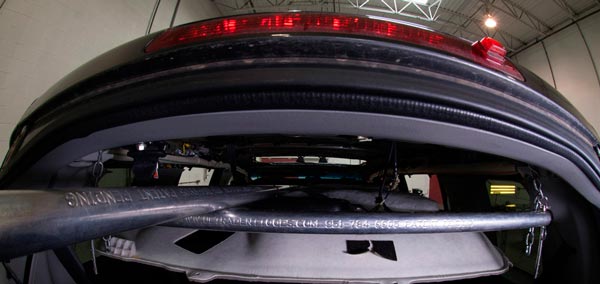How Does Paintless Dent Repair Work?
Kent Cancilla, DCC Hail
Did you know that most automotive body panels have a "memory" of their initial shape and contour? A panel that has been dented in a certain way, up to certain stress levels, actually "wants" to spring back to its undamaged shape. This characteristic, called "elasticity", is what makes paintless dent repair possible.
PDR technicians use a wide variety of special-purpose tools, some of which are shown above, to get beneath a dent and guide it out. No two dents are the same, which is why PDR takes a careful eye and a lot of practice, but the process goes something like this --
- During intake, scan the vehicle's ODB2* port to set a baseline
- Gently remove car trim and moldings
- Gain access to the underside of the dented panel
- Select the appropriate dent pressure pick
- Carefully apply measured pressure to the protrusion
- Inspect panel contour visually and with interferometry to assess shape
- During QA, scan the vehicle's ODB2* port to ensure no new fault codes are shown
* An ODB2 port is the diagnostic plug available in all passenger vehicles for rapid diagnostic assessments. It gives technicians a way to talk directly to the vehicle's on-board computer to learn about problems (called fault codes). By comparing before-and-after ODB2 scans we can be sure we didn't inadvertently trigger any new fault codes. And if we did, we'll take care of it!
The two last steps are the tricky ones. When a technician applies pressure to reverse a dent, he must be certain not to damage the paint or clearcoat, and not to cause the dent to become a convex distortion on the panel surface. The amount of pressure depends on the type of metal (steel or aluminum), the size of the dent, the location of the dent in relation to natural panel strength ridges, and other factors. It takes years to develop the perfect touch!

A PDR technician uses several assessment methods to ensure the panel is restored back to near factory-new tolerance. Light panels, LED matrix boards, and even laser contour measurement tools are available. With the right tools and experience, a skilled PDR technician can guide a panel back to within 0.020" of original shape!
Today's automotive paint is extremely flexible, and will take a significant deformation before it stretches or cracks. Paintless dent repair is more cost effective for repairing dents that do not break the clearcoat or finish, simply because the amount of labor required is much lower. There are no filling, patching, sanding, priming, or painting steps. Once a technician has access to the underside of a body panel, all the dents on that panel can be fixed.

More advanced techniques in paintless dent repair involve careful application of heat to soften a finish, or glue plugs to facilitate the removal of dents that are in awkward places. DCC Hail uses all these approaches, based on a careful assessment of each vehicle and the hail damage it contains.